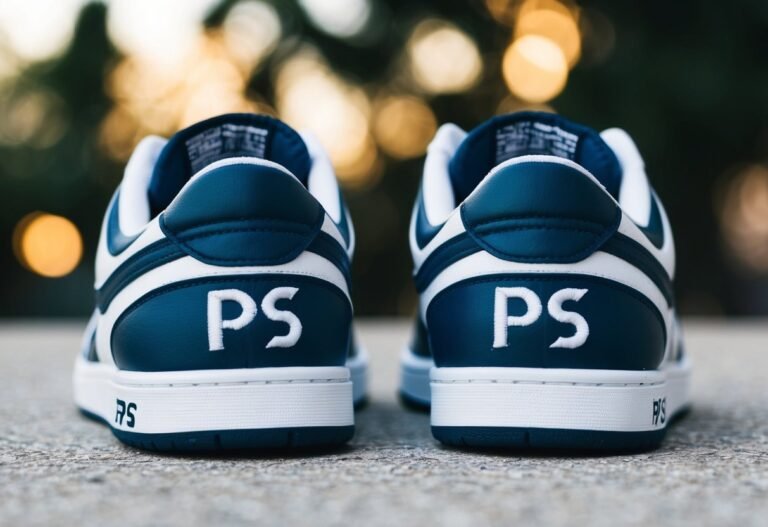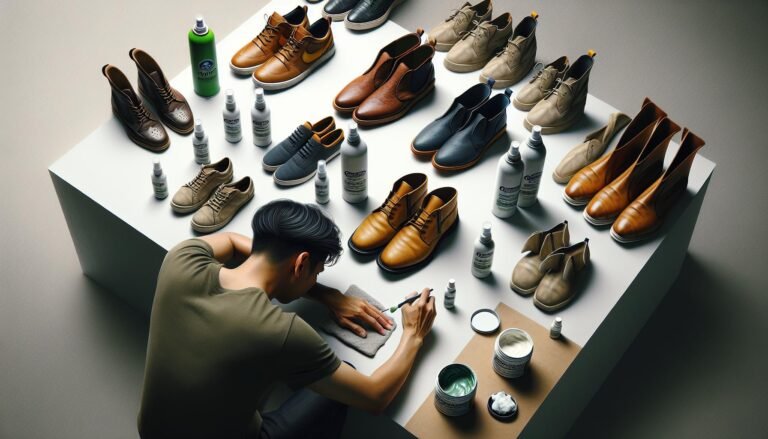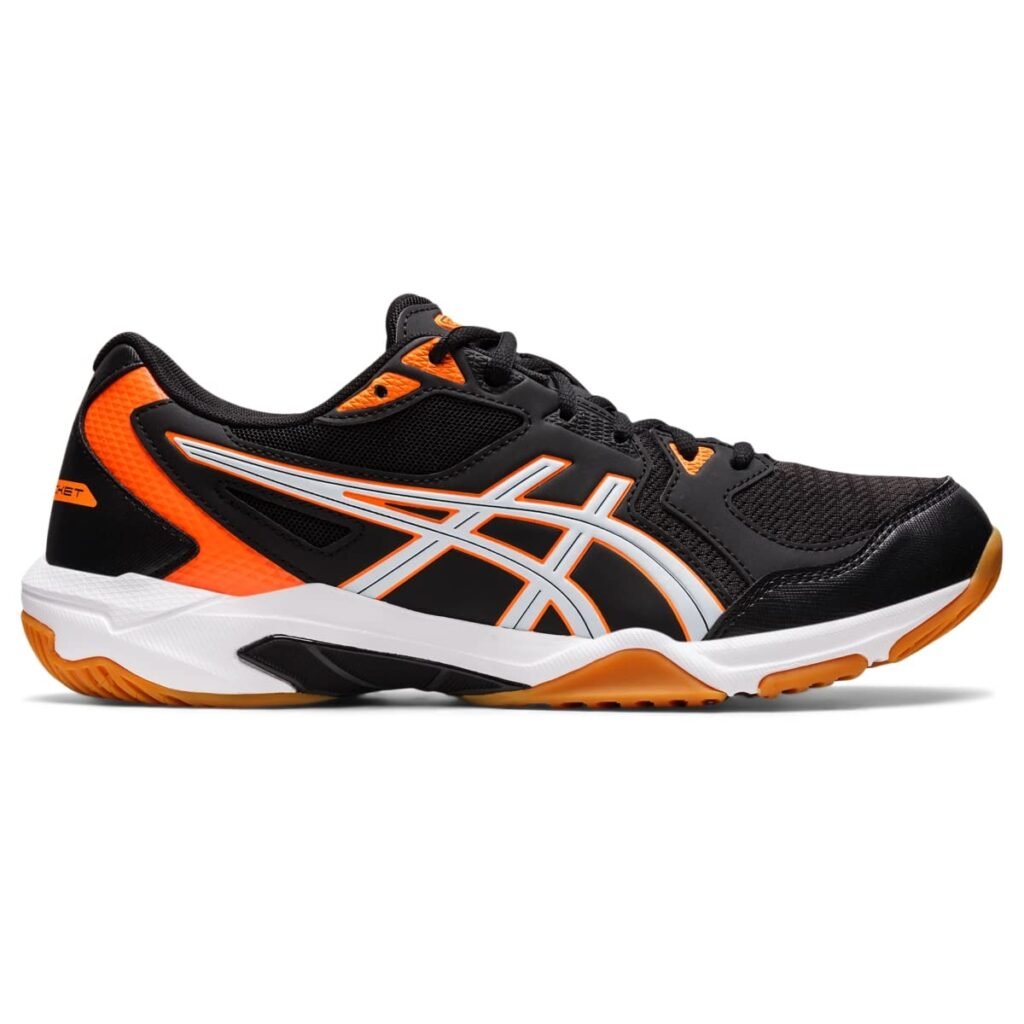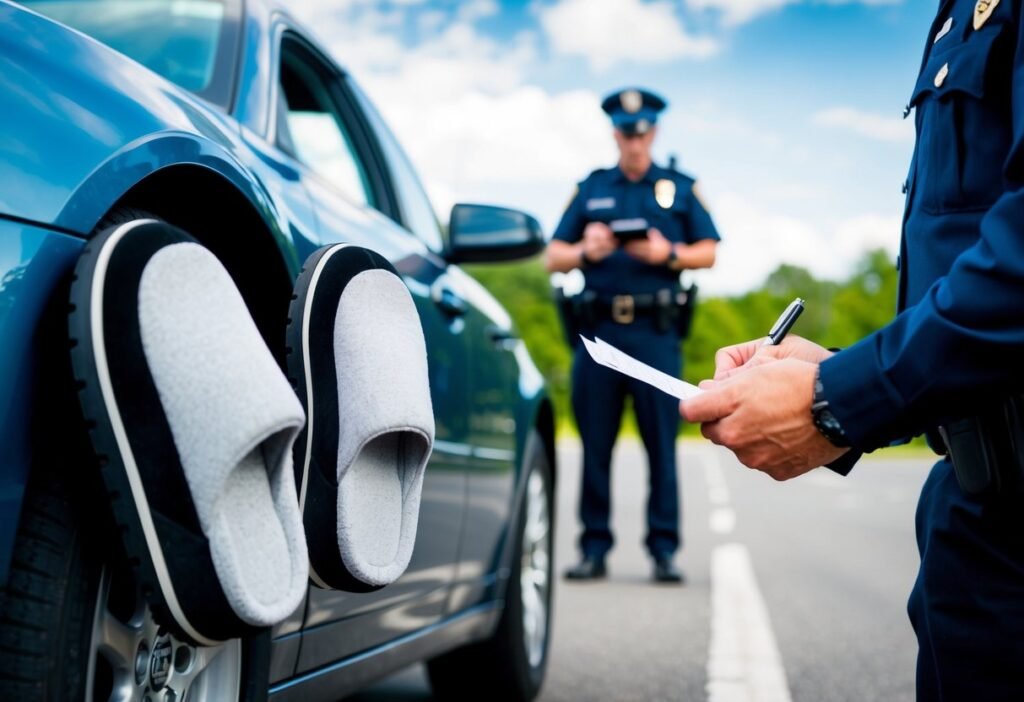How to Remove Coffee Stains from White Shoes: Easy Methods for Every Material
Coffee stains on white shoes can be a real eyesore, turning your favorite footwear into a frustrating mess. Whether it’s a morning mishap or an accidental spill during the day, those unsightly brown marks can seem impossible to remove. But don’t worry, there’s hope for your cherished kicks.
Key Takeaways
- Understanding Coffee Stains: Coffee contains tannins that penetrate shoe fibers causing stubborn stains, especially visible on white shoes which readily absorb spills due to their light color and common materials like canvas or leather.
- Essential Cleaning Materials: Household items such as baking soda, hydrogen peroxide, and dish soap effectively combat coffee stains, while specialized products like OxiClean, Shout Advanced Gel, and Zout offer targeted stain removal solutions.
- Step-by-Step Stain Removal: Follow specific cleaning techniques for different materials — canvas, leather, and synthetic fabrics — using appropriate agents and methods to treat and remove coffee stains effectively.
- Post-Cleaning Care: Air-dry shoes to avoid damage from heat, use paper towels or a shoe tree to maintain shape, and condition materials like leather or apply protective sprays for future stain resistance.
- Preventing Future Stains: Apply protective sprays such as Scotchgard or Crep Protect regularly, undertake routine maintenance, and store shoes properly to keep them stain-free and in good condition.
- Best Maintenance Practices: Rotate shoe pairs, inspect for stains regularly, store properly, and use correct brushing techniques to extend shoe life and prevent damage.
Understanding Coffee Stains on White Shoes
Coffee contains tannins, which cause stains. Tannins are naturally occurring compounds present in coffee that bind to fabrics. When coffee spills on shoes, tannins penetrate fibers, creating stubborn brown marks. The longer the tannins remain, the more challenging it becomes to remove them.
Why White Shoes Are Particularly Vulnerable
White shoes are particularly vulnerable because they lack colors to mask stains. Any discoloration stands out on white surfaces, making stains more visible. The material of white shoes, often made from canvas, leather, or synthetic fabrics, absorbs coffee quickly, leading to deeper stains if not treated promptly.
Materials and Tools Needed for Stain Removal

Common Household Items
Certain household items effectively remove coffee stains from white shoes given their accessibility and effectiveness. Baking soda, hydrogen peroxide, and dish soap serve as primary agents. Baking soda neutralizes acidic stains, making it an excellent choice for coffee marks. Hydrogen peroxide acts as a mild bleach, lifting the stain from the fabric without causing damage. Dish soap contains surfactants that break down the oil and tannin components in coffee, allowing for easier removal. Additionally, a clean cloth or sponge can help in applying these solutions and scrubbing the stain.
Specialized Stain Remover Products
Several specialized stain removers available on the market target stubborn coffee stains. Products like OxiClean, Shout Advanced Gel, and Zout are formulated to break down and lift stains without harming shoe material. OxiClean relies on oxygen-based bleach for an intense yet safe cleaning process. Shout Advanced Gel uses surfactants and enzymes to penetrate and eliminate deep stains. Zout includes protease enzymes designed specifically to dissolve protein-based stains like coffee. Using a soft-bristled brush or specialized shoe-cleaning brush helps in applying these products thoroughly and evenly for optimal results.
Step-by-Step Guide to Removing Coffee Stains

Pre-Treatment Preparations
Gather materials before starting stain removal. Identify tools like a soft-bristled brush, clean cloth, bowl, and toothbrush. Choose cleaning agents based on shoe material, such as baking soda, hydrogen peroxide, dish soap, or specialized stain removers.
Ensure shoes are dry because water can dilute cleaning agents and spread the stain. Remove excess coffee by blotting with a clean cloth without rubbing to avoid embedding the stain deeper into the fibers.
Cleaning Techniques and Tips
Canvas Shoes:
- Mix a tablespoon of baking soda, a tablespoon of hydrogen peroxide, and a small amount of warm water.
- Dip the toothbrush into the solution, then gently scrub the stained area in circular motions.
- Let the mixture sit for 30 minutes before rinsing with cool water.
Leather Shoes:
- Combine equal parts mild dish soap and warm water.
- Use a soft cloth to apply the solution to the stain, rubbing gently.
- Wipe away the soap with a damp cloth, then dry with a towel.
Synthetic Fabrics:
- Apply a small amount of stain remover directly to the stain.
- Let it sit according to the product’s instructions, usually 5 to 10 minutes.
- Rinse with cool water, then pat dry with a clean cloth.
Drying and Post-Clean Care
Always air dry shoes to prevent material damage from heat. Stuff the shoes with paper towels or a shoe tree to maintain shape and absorb excess moisture.
After drying, treat leather with a conditioner to restore suppleness. For canvas, use a protective spray to guard against future stains. Regular maintenance can extend the life of shoes and prevent stains from setting in quickly.
Preventative Measures for Future Stains

Protective Sprays and Coatings
Applying protective sprays and coatings to white shoes creates a barrier against coffee stains. Choose products specifically designed for the shoe material, like Scotchgard for canvas or Crep Protect for leather and synthetic fibers. These sprays repel liquids and prevent stains from setting. Reapply the spray every few weeks, especially after cleaning the shoes, to maintain their effectiveness. Test the product on a small area before full application to avoid discoloration.
Best Practices in Shoe Maintenance
Maintaining white shoes involves regular cleaning and proper storage. Inspect shoes after each wear to identify and address potential stains promptly. Store shoes in a cool, dry place away from direct sunlight, which can cause yellowing. Use shoe trees or stuffing to retain the shape and absorb moisture. Rotate between multiple pairs of shoes to reduce wear and tear on a single pair. Employ proper brushing techniques, using a soft-bristled brush for canvas or a leather-specific brush for leather shoes, to remove surface dirt and protect the material. Clean shoes regularly based on the manufacturer’s recommendations to keep them in optimal condition.

Removing coffee stains from white shoes doesn’t have to be a daunting task. By understanding the nature of the stains and the materials of your shoes, you can effectively tackle those pesky marks. Utilizing household items or specialized products can make a significant difference in maintaining the pristine look of your footwear.
Preventative measures like protective sprays and regular maintenance are key to keeping your white shoes looking fresh. By incorporating these practices into your routine, you can enjoy your favorite pair of shoes without the worry of stubborn coffee stains.
Frequently Asked Questions
What causes coffee stains on white shoes?
Coffee stains on white shoes occur because materials like canvas, leather, and synthetic fabrics quickly absorb the liquid, making the stains deeply embedded.
Can coffee stains be removed from all types of shoe materials?
Yes, coffee stains can be removed from various shoe materials, but the method and tools used may vary depending on whether the shoes are canvas, leather, or synthetic.
What household items can be used to remove coffee stains from shoes?
Common household items like baking soda, white vinegar, and mild soap can effectively remove coffee stains from shoes.
Are there specialized stain removers for different shoe materials?
Yes, there are specialized stain removers tailored for specific materials like canvas, leather, and synthetic fabrics that can help effectively remove coffee stains.
How can I prevent coffee stains on my white shoes?
To prevent coffee stains, use protective sprays like Scotchgard for canvas shoes or Crep Protect for leather and synthetic fibers to create a stain-resistant barrier.
How often should I apply protective spray on my shoes?
It’s recommended to reapply protective spray every few weeks, especially after cleaning your shoes, to maintain the stain-resistant barrier.
Is regular shoe maintenance important?
Yes, regular cleaning, proper storage, and using the right tools and products are essential for preserving the condition and appearance of your shoes.
What are the best practices for storing white shoes?
Store white shoes in a cool, dry place away from direct sunlight. Use shoe trees or stuff them with tissue paper to maintain their shape.
Can I use any cleaning tool on my shoes?
No, it’s best to use tools appropriate for the shoe material, such as soft brushes for canvas and specialized leather cleaners for leather shoes, to avoid damage.
How quickly should I treat coffee stains on white shoes?
Treat coffee stains as soon as possible to prevent them from setting in and becoming more difficult to remove.
Treat coffee stains as soon as possible to prevent them from setting in and becoming more difficult to remove.











